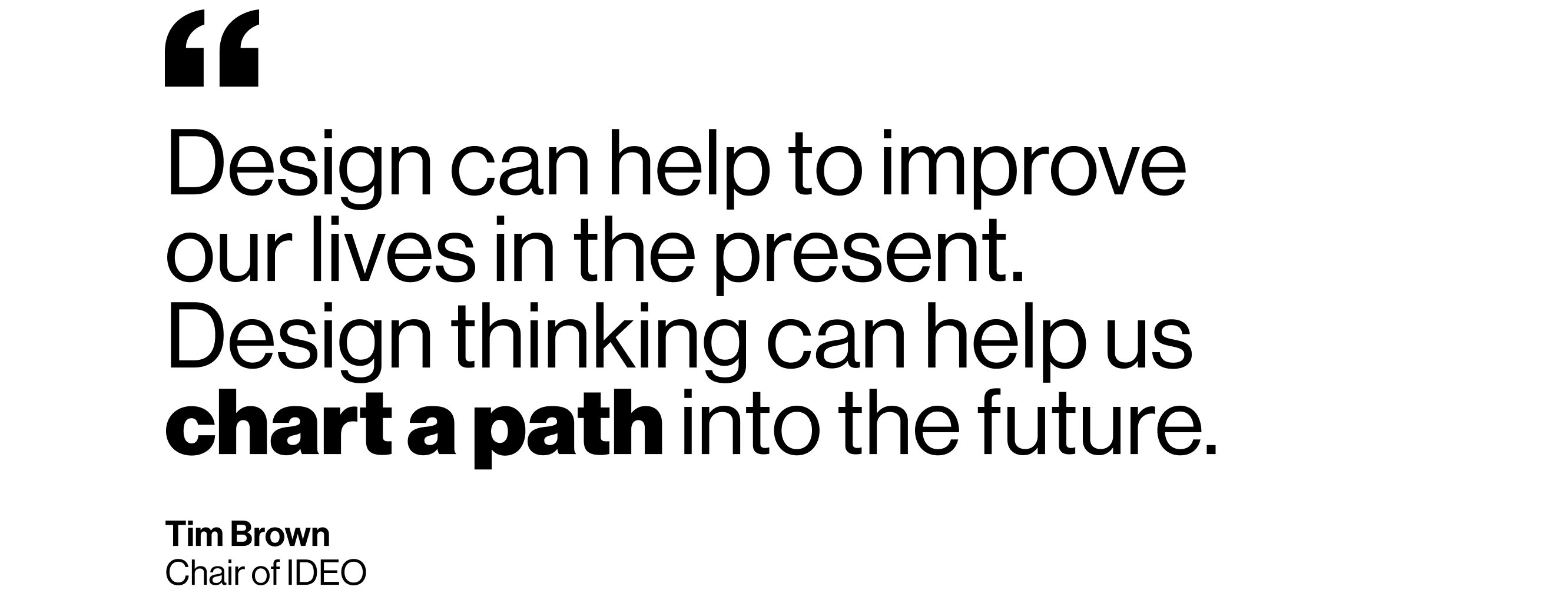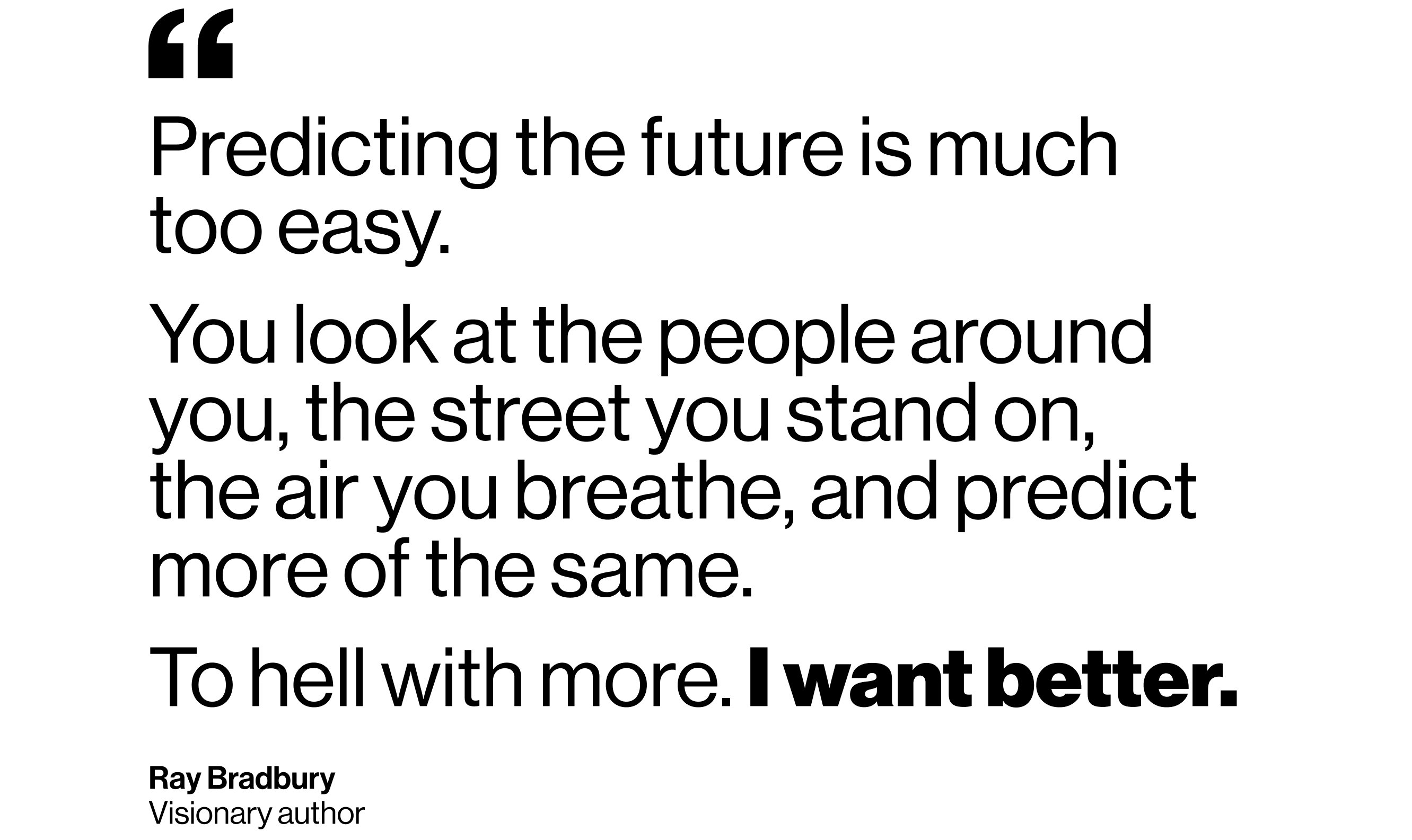

At what point does the present become the future? What steps are necessary to bridge the gap between the here and now and what lies ahead? And how long does the future remain malleable, a space of possibility ready to be shaped according to a shared vision?
Time flows at different paces across different sectors, from the deliberate and steady pace of large-scale legacy infrastructures to the lightning-speed progress of GenAI innovation.
Regardless of pace, companies without a robust future strategy risk falling behind, caught against a growing tidal wave of shifting technologies, shifting perceptions, shifting realities… no longer leaders in the terraforming of the market landscape, but simply trying to keep up.
So, let’s find out what it means — and what it takes — to envision and manifest the future.

Not what it seems: Understanding the future
…or rather, futures.
The Futures Cone is a strategic foresight tool created by futures studies academic Joseph Voros.

It highlights four different types of futures:
- Possible Futures — the full range of anything that could conceivably happen
- Plausible Futures — the smaller range of believable or credible future scenarios
- Probable Futures — what appears likely to happen, based on current trends and data
- Preferable Futures — the vision of a future desired by individuals, organizations, or societies
But what the Futures Cone does best is illustrate a simple and vital truth: while the movement of time itself is linear, the way we progress into the future is not. The farther we look from the present moment, the wider the space of uncertainty and potential becomes.

Thinking into being: The processes behind future envisioning
Powerful future envisioning must involve three distinct modes of thinking:
- Imaginative exploration: On the one hand, we must be able to think wide and wild as we look far ahead. Stretching boundaries to explore and test an unconstrained range of approaches, possibilities, scenarios, and design concepts.
- Disciplined strategic planning: On the other hand, it’s crucial that we have the rigor to conceptualize the tangible steps necessary to make our desired future state a reality. We may know what we want the future to look like ten years from now. To make that happen, what do we need to do five years from now? Two years from now? What do we need to do tomorrow?
- Impactful storytelling: But the above is not enough without a means to drive the message forward, communicate urgency, and get buy-in from client leadership and key stakeholders. It’s essential to articulate both the high-level vision and the step-by-step action plan necessary to actualize it in a way that cuts deep — telling a compelling, resonant story to inspire leadership, galvanize support, and foster inter-organizational alignment to drive collective action.

Evidence-based: Envisioning at Blink
Blink has a long history of equipping our clients with the product vision necessary to become and remain leading actors in their spheres. Over the past few months, we’ve partnered with multiple clients to do just that.
Designing for a backlash against screen-based devices
For one Big Five tech client, we developed a vision-forward product POV, pairing expansive design research — from current market products to speculative design on the technological frontier — with a design strategy to envision and be prepared for an edge-case possible future.
How can we design for a backlash against the increasingly demanding, even overbearing role that technology can play in our lives, particularly when it comes to our screen-based mobile devices? How might we focus on screenless devices to foster a holistic multisensory customer experience, bridging sight, touch, and sound in nonintrusive ways?
Bringing the smart home to life
In another recent project, we helped our client manifest a bold vision of the future of the smart home. Through impactful storytelling and inspirational immersive theater, we generated excitement and buy-in from leadership, putting our client team’s work on track to implementation.
Exploring the untapped potential of GenAI in technology education
It’s not surprising that our envisioning efforts have been increasingly expanding into the GenAI realm, as well. We’ve recently partnered with another Tech Giant to explore the potential of GenAI implementation in technology education. We gained a deep understanding of the market landscape and user sensibilities through user and design research, defined meaningful pillars of GenAI function within user learning mental models, uncovered untapped areas of opportunity, and synthesized the steps necessary for our client to achieve their short- and long-term goals.

Conclusion: Why envisioning, and why now
Future envisioning work can take many forms to generate opportunities for organizations and product teams. It keeps momentum going by informing the creation of future and parallel workstreams, fosters envisioning-to-implementation conversations with leadership, and generates buzz among other teams within the org.
But what makes envisioning an integral part of the product development life cycle — and when is the time to take the leap into envisioning work?
Let’s think back to the Futures Cone for a moment. Future envisioning is essential because following the probable is simply not enough. Falling into predictable paths allows competitors to gain the upper hand. We must have the tenacity to pursue the preferable future as well as the vigilance to be prepared for what else may come — and in order to do so successfully, we must always be proactive in the now.




